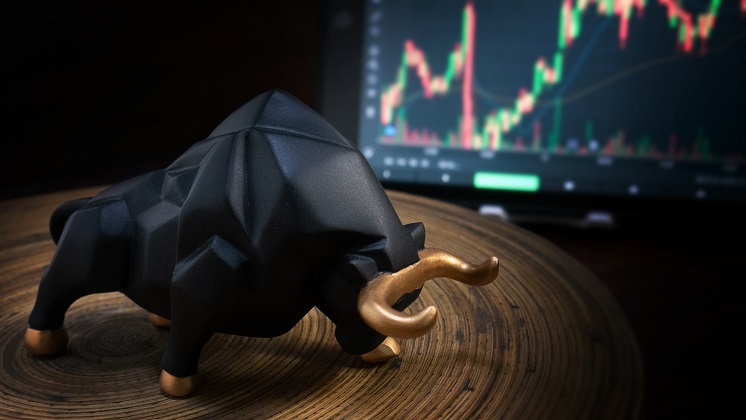A psychological bias in investing is the recency bias. Recent events influence investor behaviour more than past events. This over-importance given to recent events while judging future trends leads to biased conclusions. The near 18 percent rally in Nifty from the sub 17,000 lows of March to near 20,000 by July has given a feel of a raging bull market. This is a recency bias. If we take a slightly longer-term view, the market’s performance is pedestrian. In CY2022 Nifty delivered only 4 percent return. And the YTD return in 2023 is only 9 percent. So, the time perspective is important. If we take the time period from April 2020 till now, it can be argued that the market is in a bull phase.
The legendry investor John Templeton said, “Bull markets are born on pessimism, grown on skepticism, mature on optimism and die on euphoria.”
Where are we in this bull phase?
This bull phase was born on the pessimism of the Covid outbreak when Nifty crashed to 7,511 in March 2020. For the next eighteen months, we had a one-way rally born on scepticism, which took the Nifty to 18,604 in October 2021. After a consolidation phase lasting more than a year, the bull is charging again. We are not yet in the stage of euphoria.
The rally is global
Even though the recent rally didn’t come as a surprise, the ferocity of the rally took most investors by surprise. Broadly, there are two factors driving this rally: one, global and two, domestic. It is important to understand that the ongoing stock market rally is global. In the mother market US, the S&P 500 is at 52-week high; Euro Stoxx 50 is at 52-week high; Germany has tipped into recession, but the DAX is at 52-week high; French CAC is at 52-week high; Japanese Nikkei is roaring with 24 percent YTD returns; in South Korea and Taiwan indices are at 52-week highs; in India Nifty and Sensex are at record highs. This is a global rally!
The soft-landing narrative has triggered the rally
The mother market US is leading the rally with 36 percent gains in Nasdaq and 18 percent gains in S&P 500, as of 21st July. Markets have repaired the damage done in 2022 which saw Nasdaq correcting by 30 percent. Last year the market corrected on fears that the US economy will tip into a recession in 2023, perhaps by mid-2023, impacting global growth. The majority of economists and market experts felt that a US recession was inevitable; many feared a hard landing for the US economy. In 2022, markets discounted this fear.
Now the narrative has changed from the fear of a hard landing to the possibility of soft landing for the US economy. A US recession is nowhere in sight: 2023 Q1 GDP growth at 2 percent was 50 percent higher than estimates. Monetary tightening by the Fed has paid off with US CPI inflation declining from the peak of 9.1 percent in March 2022 to 3 percent in June 2023. The labour market is extremely tight, and unemployment continues to remain at 50-year low of 3.6 percent. The ongoing market rally confirms the Fed Chief Jerome Powell’s remark that “the case of avoiding a recession is more likely than having a recession.”
India’s growth is robust with macro stability
Apart from the global support, the domestic factors sustaining the rally are India’s strong and improving macros and the flood of FPI inflows triggered by these fundamentals. Indian economy is in a sweet spot with impressive GDP growth, declining CAD, stable currency, and promising leading indicators like rising PMI, sustained steady growth in GST and direct tax collections and resilient credit growth. The primary factor that has triggered this rally is the ‘U’ turn in the FPI strategy from ‘Sell India, Buy China’ during January and February this year to ‘Buy India, Sell China’ during the last three months. (More details in Editorial)
High valuations
At 19700, Nifty is trading above 20 times FY24 estimated earnings. Considering India’s bright growth prospects, India deserves a higher valuation than the historical PE multiple of 16. But from the near-term perspective, at a PE multiple of 20, the market is slightly running ahead of fundamentals. Barring US, India is the most expensive market in the world now. The market is not yet in a euphoric phase, but it is time to be cautious.
What are the risks?
More often, than not, unexpected, and unforeseen events cause market corrections. The Covid outbreak in early 2020 and the Russian invasion of Ukraine in February 2022 were unexpected events. These were ‘unknown unknowns’; but sometimes ‘known unknowns’ also impact the market. Perhaps, the most significant ‘known unknown’ now is the soft-landing narrative getting derailed. It is possible that inflation may remain entrenched forcing the Fed to hike rates twice more by 25 bp each against the market expectation of only one more rate hike. Also, since monetary policy acts with a lag, the US economy tipping into recession by Q4 of this year cannot be ruled out. These risks can cause corrections since the present valuations are at high levels.
Wealth is generated through systematic investment and by remaining invested. Stay with this time-tested strategy.






